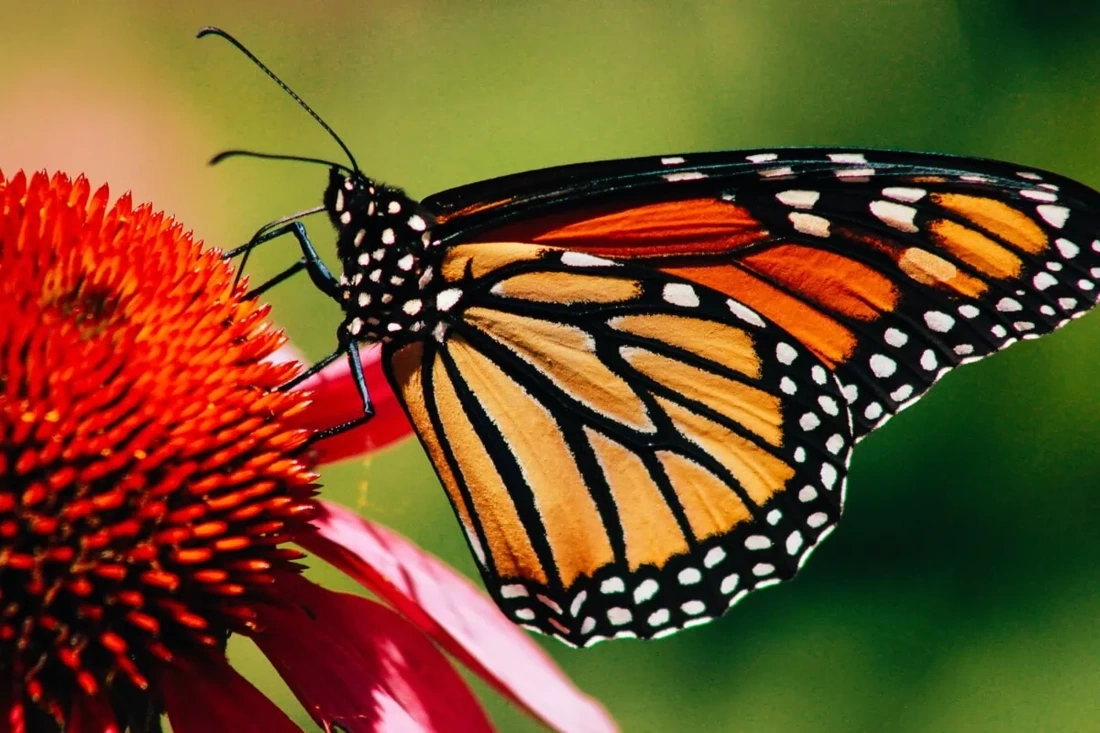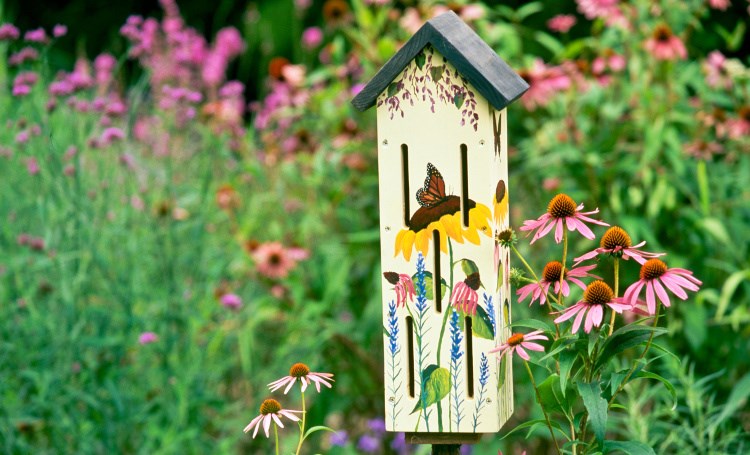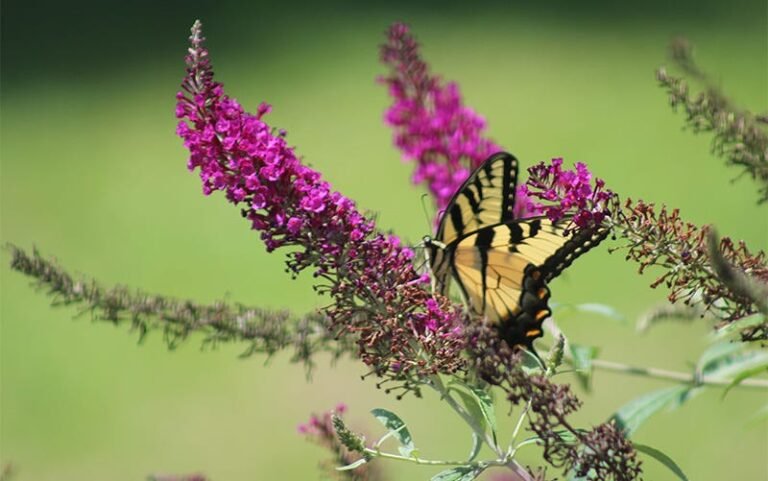Butterflies bring beauty to any garden. These delicate creatures add a splash of color and life.
Your garden can become a haven for butterflies with the right elements. Creating shelter for these winged visitors is more than just planting flowers. It involves understanding their needs for survival and how a garden can become a sanctuary. Imagine your garden alive with the flutter of butterfly wings.
To make this a reality, it’s essential to build a safe space for them to thrive. Butterflies seek out specific conditions to feed, rest, and lay their eggs. By offering these, you can enjoy their presence all season long. A butterfly shelter in your garden supports local ecology and provides endless natural beauty. This guide will show you simple steps to attract these flying jewels. You’ll learn what plants they love and how to make your garden a butterfly paradise.
Attracting Butterflies: The Basics
Transform your garden into a haven for butterflies. These colorful visitors add beauty and life to any outdoor space. To attract them, you need to know the basics. Create a butterfly-friendly environment and enjoy the flutter of wings among your flowers.
Essential Elements For Butterfly Habitats
Butterflies need sun, shelter, and nourishment. A successful habitat offers these elements. Here’s how to set the stage:
- Sunlight: Butterflies love sunny spots for basking.
- Plants: Caterpillars and adults need host and nectar plants.
- Water: A shallow source keeps them hydrated.
- Shelter: Plants and structures protect from predators and elements.
Understanding Butterfly Preferences
Each butterfly species has unique likes. Some prefer certain flowers or times of day. To attract a variety, follow these tips:
- Plant native flowers. They attract local butterflies.
- Mix colors and shapes. This draws different species.
- Include larval food plants. Caterpillars need them to grow.
Observe your garden to see what works best. Then, adjust your approach to welcome more butterflies.

Designing Your Butterfly Garden
Welcome to the enchanting world of butterflies! Creating a garden that invites these delicate creatures is rewarding. Let’s design a butterfly haven together.
Choosing The Right Location
Butterflies love sunshine and shelter. Pick a spot that gets plenty of sun but is shielded from strong winds. A sunny, east-facing area that warms up early in the day is ideal.
Garden Layout And Plant Selection
The layout and plants you choose are key for a butterfly-friendly garden. Aim for a mix of host plants for caterpillars and nectar sources for adults. Here’s how to get started:
- Include native plants that butterflies in your area prefer.
- Plant in groups to create a bold display that’s easy for butterflies to find.
- Ensure blooms throughout the seasons for a steady food supply.
| Plant Type | Examples | Blooming Season |
|---|---|---|
| Host Plants | Milkweed, Parsley | Spring to Fall |
| Nectar Plants | Coneflower, Lantana | Summer to Fall |
Remember, a diverse garden with different heights, colors, and types of plants will attract more butterflies. Keep it organic too. Pesticides can harm these gentle insects.
Plant Varieties That Invite Butterflies
Transform your garden into a paradise for butterflies. Start by choosing the right plants. Butterflies need specific plants for nectar and laying eggs. Let’s explore how to make your garden inviting for them.
Native Plants For Nectar And Larvae
Butterflies thrive on native plants. These plants offer the best support for their lifecycle. Here’s a list of plants that attract butterflies:
- Milkweed – Perfect for Monarch butterflies.
- Purple Coneflower – Attracts a wide range of butterflies.
- Black-eyed Susan – Offers both nectar and larvae support.
Choose plants that are well-suited to your local climate. This ensures they grow strong and provide a reliable food source for butterflies.
Year-round Blooming Schedule
To keep butterflies coming, your garden needs flowers all year. Plan a blooming schedule that includes plants flowering at different times. Here’s a simple guide:
| Season | Plant |
|---|---|
| Spring | Lilac |
| Summer | Lavender |
| Fall | Sedum |
| Winter | Winter Jasmine |
This schedule ensures your garden has flowers throughout the year. It makes your garden a favorite spot for butterflies.
Shelter Requirements For Butterflies
Butterflies bring life and color to gardens. They need safe shelters. Let’s create perfect spots for them to thrive.
Protection From Predators
Butterflies face many threats. Birds, spiders, and other insects can harm them. A garden rich in hiding spots is vital. Dense shrubs and tall grasses offer cover. Butterflies can hide and escape danger here.
Safe Havens From Harsh Weather
Butterflies need protection from weather. Too much sun, wind, and rain can be harmful. Plants and structures in gardens can shield them. Leafy trees and bushes provide shade and block wind. Overhangs and loose bark offer dry spots during rain.
- Plant trees for shade and windbreaks
- Add bushes and tall plants for cover
- Build structures like pergolas for shelter
- Leave leaf litter on the ground for hiding
Water Sources For Your Winged Visitors
Butterflies bring a garden to life with color and movement. Yet, to thrive, they need more than nectar. Water sources in your garden invite these delicate creatures to stay, hydrate, and grace your flowers. Let’s set up a water sanctuary for them!
Setting Up Butterfly Puddles
Butterflies enjoy shallow puddles. They gather minerals and salts from these wet spots. Here’s a simple way to create a butterfly puddle:
- Dig a small hole in a sunny spot.
- Line it with sand or gravel.
- Keep it moist by adding water regularly.
- Add a pinch of salt for extra minerals.
Place stones inside for butterflies to land and sip. Check and refill your puddle after rain or on hot days.
Maintaining Clean Water Features
Keep water sources fresh for butterfly health. Follow these tips:
- Change water in bird baths or dishes every few days.
- Clean containers to prevent algae and bacteria.
- Remove debris like leaves and twigs regularly.
A little care ensures safe drinking spots for your winged visitors.

Garden Care For Butterfly Attraction
Garden care is key for attracting butterflies. Simple steps can make a big difference. Let’s dive into how to make your garden a butterfly haven.
Avoiding Pesticides And Insecticides
Butterflies need a safe garden. Pesticides and insecticides can harm them. Go for natural ways to keep pests away. This keeps butterflies safe.
- Use soapy water for aphids.
- Plant marigolds. They keep bugs away.
- Neem oil is a good choice for many pests.
Organic Gardening Practices
Organic gardening is great for butterflies. It uses natural ways to grow plants. This helps the environment and attracts butterflies.
- Compost adds nutrients to the soil.
- Mulching keeps soil moist. It helps plants grow.
- Companion planting keeps pests away naturally.
Remember, a butterfly-friendly garden is colorful and safe. Use these tips to create a haven for them in your garden.
Observing And Enjoying Your Butterfly Guests
Creating a haven for butterflies transforms a garden into a lively space. These delicate visitors add color and motion, inviting gardeners to pause and appreciate nature’s wonders. With the right approach, you can observe and enjoy your butterfly guests with minimal impact on their natural behavior.
Best Practices For Butterfly Watching
Patience is key when watching butterflies. These creatures need time to trust their surroundings. A quiet, steady presence allows for close observation.
- Choose natural clothing colors to blend in.
- Move slowly and avoid quick movements.
- Wait for butterflies to approach flowering plants.
Keep a field guide handy to identify species and learn about their habits.
Photographing Butterflies Responsibly
Capturing the beauty of butterflies requires responsibility. A good photo respects the butterfly’s space and well-being.
- Use a zoom lens to keep a respectful distance.
- Avoid flash photography; it can startle or harm butterflies.
- Focus on natural light for the best shots.
Share your photos to inspire others to create butterfly-friendly gardens.

Contributing To Butterfly Conservation
Creating a butterfly haven in your garden not only adds beauty but also plays a vital role in butterfly conservation. These colorful creatures face threats from habitat loss and climate change. By making your garden butterfly-friendly, you contribute significantly to their survival. Let’s explore simple yet impactful ways to support these important pollinators.
Participating In Citizen Science
Joining citizen science projects offers valuable data for research. This data helps scientists track butterfly populations and health. You can easily participate through apps and websites dedicated to butterfly conservation. Your observations make a big difference in understanding and protecting these insects.
Educating Others About Butterfly Habitats
Education leads to action. Share knowledge about butterfly habitats with your community. Use social media, community boards, or local workshops. Inspire neighbors to create their own butterfly gardens. Together, we can build a network of habitats to support butterfly populations.
Frequently Asked Questions
What Plants Attract Butterflies To Gardens?
Butterflies are attracted to bright, nectar-rich flowers. Favorites include milkweed, lavender, and butterfly bush. Planting a variety of these can turn your garden into a butterfly haven. Ensure a mix for continuous bloom throughout the seasons.
How Can I Provide Shelter For Butterflies?
Butterflies seek shelter from predators and harsh weather. Dense foliage, tall grasses, and piles of leaves or twigs create ideal hiding spots. Incorporating these elements into your garden design offers butterflies safe places to rest and stay protected.
What Is The Best Time To Create A Butterfly Garden?
The best time is early spring to late summer. This timing allows plants to establish themselves and bloom, providing food and shelter for butterflies throughout their active months. Starting early also attracts early species and supports breeding cycles.
Do Butterflies Need Water Sources In Gardens?
Yes, butterflies need water but prefer shallow sources. A mud puddle or a shallow dish with water and stones for landing spots can hydrate and attract more butterflies. These water features mimic natural sources, providing essential minerals and hydration.
Conclusion
Transform your garden into a haven for butterflies with ease. Start by choosing vibrant blooms and creating sheltered spaces. Keep it free from pesticides to ensure their safety. Regularly provide fresh water for these delicate creatures. Embrace the joy of watching butterflies flutter in your own backyard.
Share the beauty with friends and family. Encourage them to join in this simple, yet rewarding, endeavor. Remember, every small step contributes to a larger impact on our ecosystem. Let’s make our gardens a sanctuary for these winged wonders. Together, we create a world where nature thrives.


